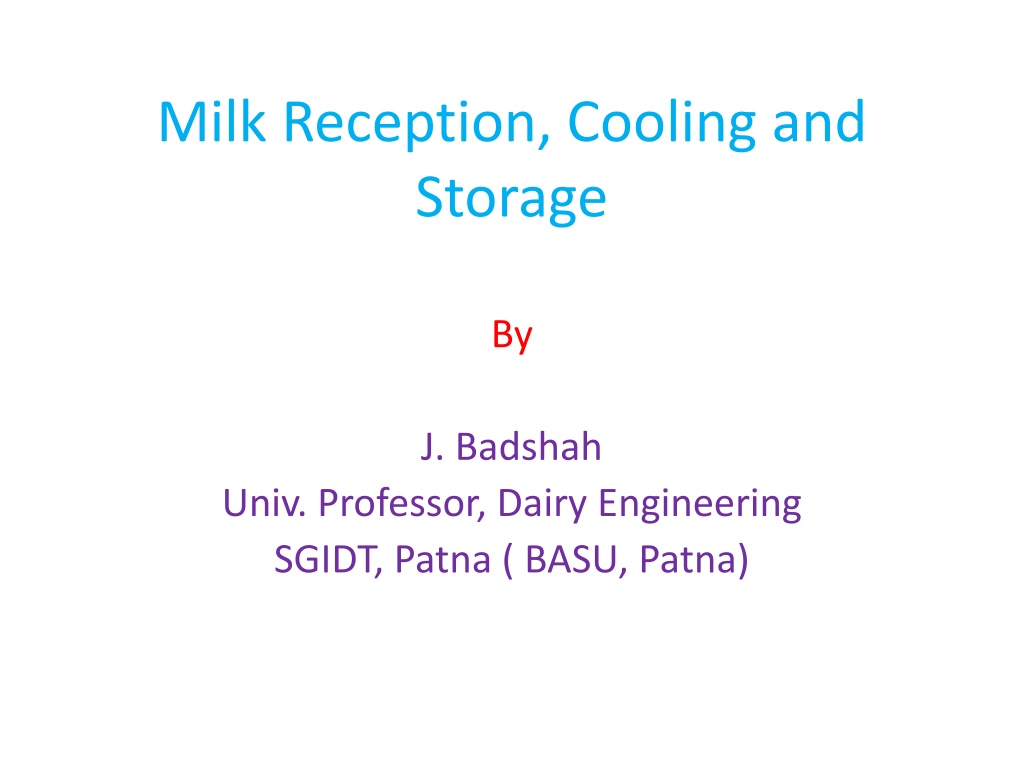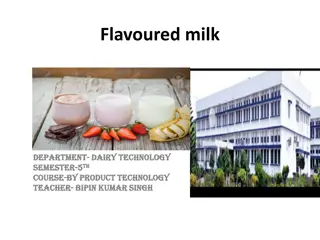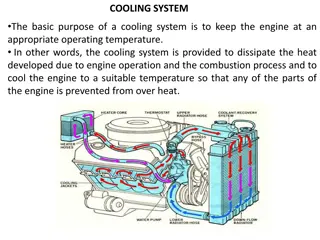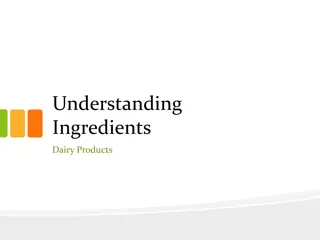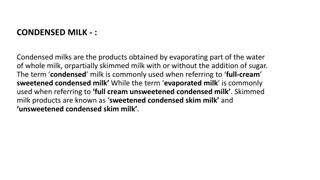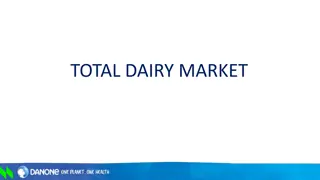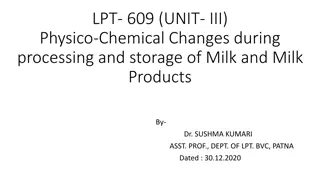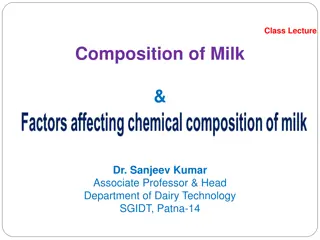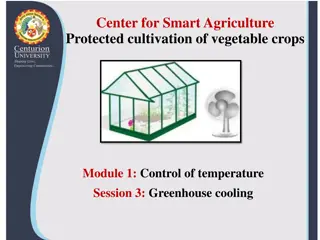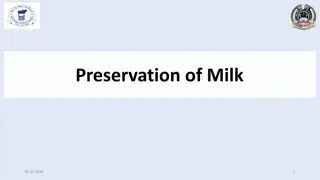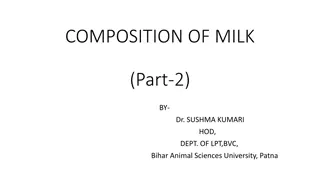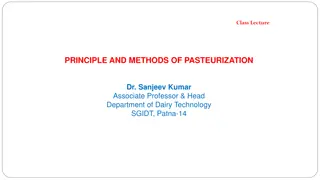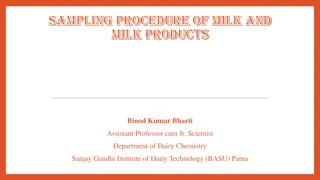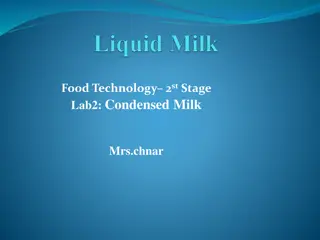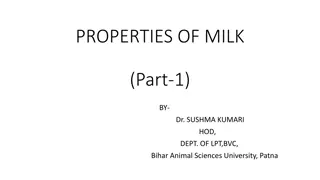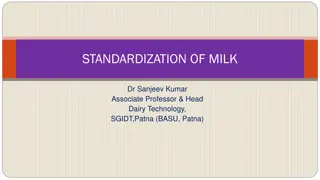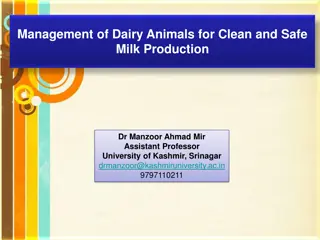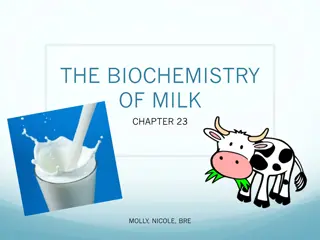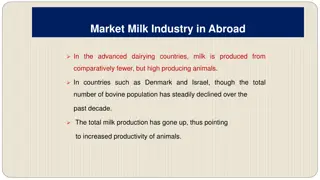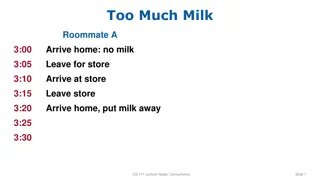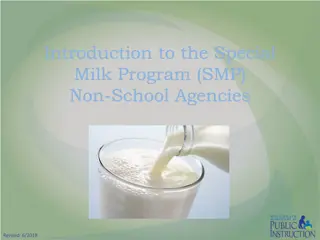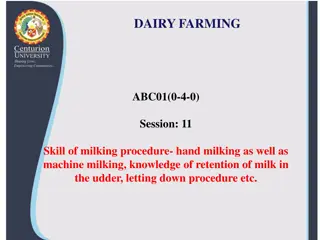Efficient Practices for Milk Reception, Cooling, and Storage in Dairy Engineering
Explore the comprehensive process of milk reception, cooling, and storage in dairy engineering, covering equipment, operations, quality control, hygiene protocols, can washer operation, maintenance, and more. Learn about receiving operations, platform tests, and maintenance tips for can washers to ensure the quality and safety of milk products.
Download Presentation

Please find below an Image/Link to download the presentation.
The content on the website is provided AS IS for your information and personal use only. It may not be sold, licensed, or shared on other websites without obtaining consent from the author. Download presentation by click this link. If you encounter any issues during the download, it is possible that the publisher has removed the file from their server.
E N D
Presentation Transcript
Milk Reception, Cooling and Storage By J. Badshah Univ. Professor, Dairy Engineering SGIDT, Patna ( BASU, Patna)
Milk Reception in Cans Equipments for Reception of Milk in Cans at RMRD a. Chain Conveyor b. Tipping bar and Tilting Device c. Weighing Bowl with weighing Balance d. Dump Tank e. Can Washer with drip saver and chain conveyor f. Steaming Block g. Can scrubber h. Platform Balance Quality Control Labs adjacent to RMRD
Receiving Operations through Cans Reception of milk and Cleaning & sanitizing of cans i. Off- loading of cans on chain conveyor ii. Grading of milk to separate Sour Milk iii. Weighing and sampling in duplex weighing Bowl of a batch and transferring to Dump tank iv. Pumping milk from Dump Tank to milk Chiller v. Storage of Milk in RMST vi. Inverting empty cans on Drip saver vii. Conveying inverted cans to Can washer viii. Sterilizing the washed cans Quality tests of samples and Platform tests etc.
Hygienic Rception and Platform Tests Temperature, Time before chilling and bacterial growth Sensory Evaluation or organoleptic Tests Platform Tests a. COB test (Clot- on Boiling Tests) b. Alcohol Tests c. Alizarin- Alcohol Tests d. 10 minute Resazurine Tests e. Methylene Bluie Reduction Tests
Can Washer Operation Draining of milk or cream remains Rinsing with normal tap water Rinsing with warm water at 40 to 50 C High velocity hot Dtergent cleaning at 71 C with alkalinity not more than 0.15%. Use of 0.5 % solution of sodium metasilicate and sodium carbonate with or without sequestering agent (if water is hard)
Can Washer Operation..contd. Rinsing with recirculated hot water at about 88 C Rinsing with clean hot water Steaming with dry saturated steam at 2.5 Kg/cm2 gauge. Hot Air blasting at 110 C for drying of the cans to prevent corrosion and bacterial growth Sanitizing with chlorine solution of 100-200 ppm or steaming in steam block
Maintenance of Can Washer Frequent Inspection of mechanical movement parts, lack of adjustment and worn out parts Worn out bushing be replaced Lubrication of moving parts Washer and strainers cleaning Cleaning of nozzles and tanks Descaling of the can washer
